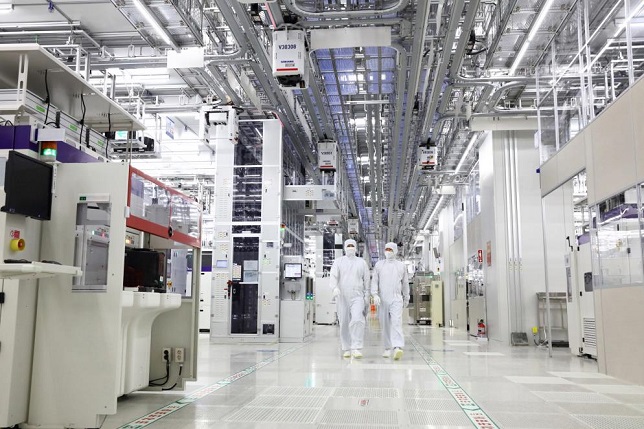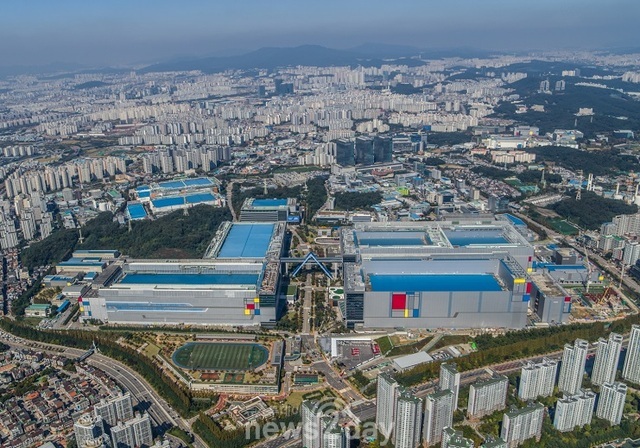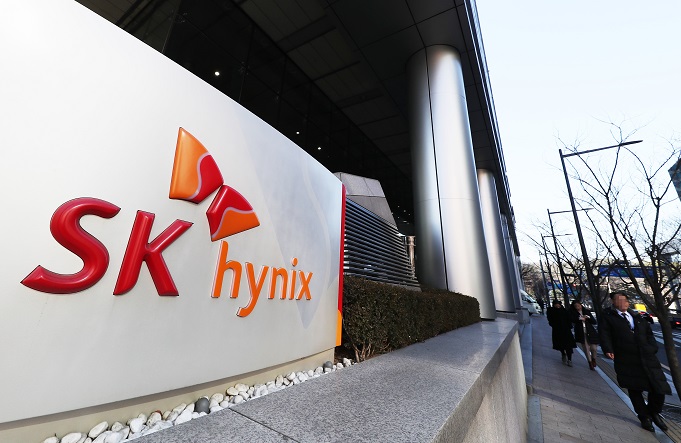SEOUL, Mar. 17 (Korea Bizwire) – Following a streak of losses, Samsung Electronics’ semiconductor division is on the brink of a financial turnaround, with projections indicating a shift to profitability in the first quarter of this year.
This anticipated recovery follows SK Hynix’s successful return to profit, signaling an end to the prolonged semiconductor industry downturn.
According to recent consensus estimates from securities firms compiled by Yonhap Infomax, Samsung Electronics is expected to post an operating profit of 4.9 trillion won for the first quarter, marking a significant surge from the 640.2 billion won reported in the same quarter last year, and a 74.4% increase from the previous quarter.
This notable improvement in performance is largely attributed to the Device Solutions (DS) division, which focuses on semiconductor operations.
Despite facing a challenging market environment due to a slowdown in IT demand, which resulted in a staggering 14.88 trillion won loss for the division last year, Samsung’s DS division is now forecasted to break its streak of quarterly losses and record a profit.
Securities firms, anticipating this turnaround, have projected DS division operating profits ranging from 200 billion won by KB Securities to 700 billion won by Meritz Securities for the first quarter.
This positive shift is supported by stabilizing DRAM and NAND prices, which began to rebound in the last quarter following production cuts by memory suppliers, including Samsung.

This photo, provided by Samsung Electronics Co., shows the tech giant’s new production line (P3) in Pyeongtaek, 70 kilometers south of Seoul, the largest chip manufacturing facility ever built to date by Samsung, whose production of state-of-the art NAND flash began on Sept. 7, 2022.
The rebound is further bolstered by normalization of customer inventories, increased memory allocation in PCs and mobile devices, and rising demand for generative AI servers, pointing towards a recovery in the semiconductor market.
Meritz Securities analyst Kim Sun-woo highlighted the unexpected improvement in the demand environment for legacy memory products, contributing not only to performance gains but also to the reversal of inventory valuation losses.
At the heart of Samsung Electronics’ semiconductor resurgence is its memory business. The DRAM sector, in particular, turned profitable in the last quarter of last year, ahead of the broader DS division and memory business unit.
Market research firm Omdia reported Samsung’s DRAM market share at 45.7% in the last quarter, maintaining its leading position and reaching its highest level since Q3 2016, driven by increased sales of high-value products like DDR5 and High Bandwidth Memory (HBM).
With the memory business unit expected to return to profitability in Q1, analysts like Kim Dong-won from KB Securities project Samsung’s memory semiconductor operating profit to reach 1.1 trillion won, marking the first profit since Q3 2022.
Omdia forecasts Samsung’s DRAM production volume to closely match last year’s levels by Q2 of this year, further indicating a recovery in the semiconductor landscape.
Meanwhile, SK Hynix, Samsung’s top competitor, has also emerged from its loss-making streak, recording an operating profit of 346 billion won in Q4 last year and setting the stage for continued improvement in Q1, with consensus estimates projecting an operating profit of 1.27 trillion won.
The rebound in average selling prices (ASP) for DRAM and NAND, coupled with the rising demand for HBM used in AI applications, presents a significant opportunity for growth.
SK Hynix, a leading supplier of HBM to AI chip giant Nvidia, is expected to benefit greatly from this trend, with SK Group Chairman Chey Tae-won taking a hands-on approach to the HBM business and other strategic areas in SK Hynix’s operations.
Kevin Lee (kevinlee@koreabizwire.com)







